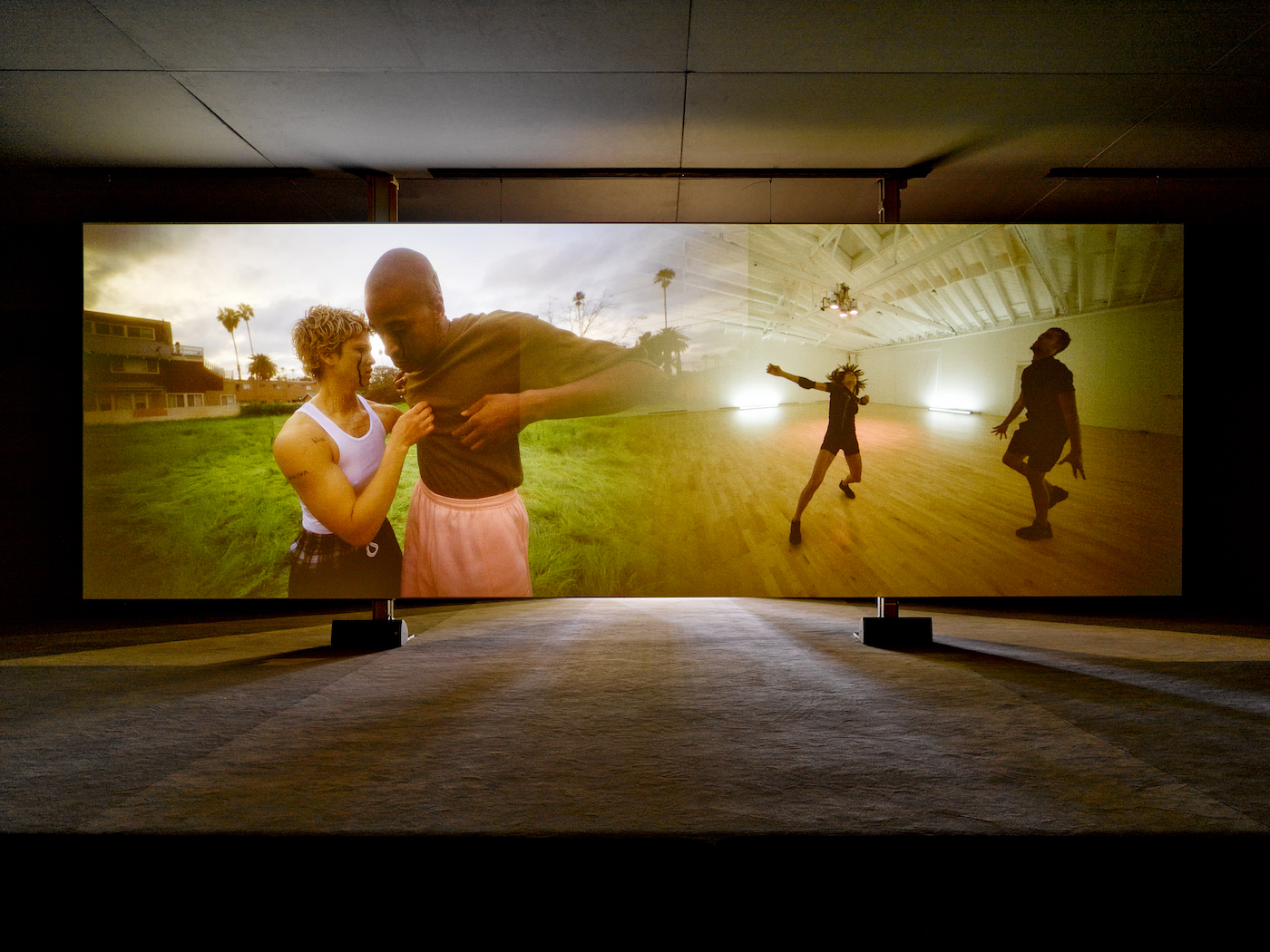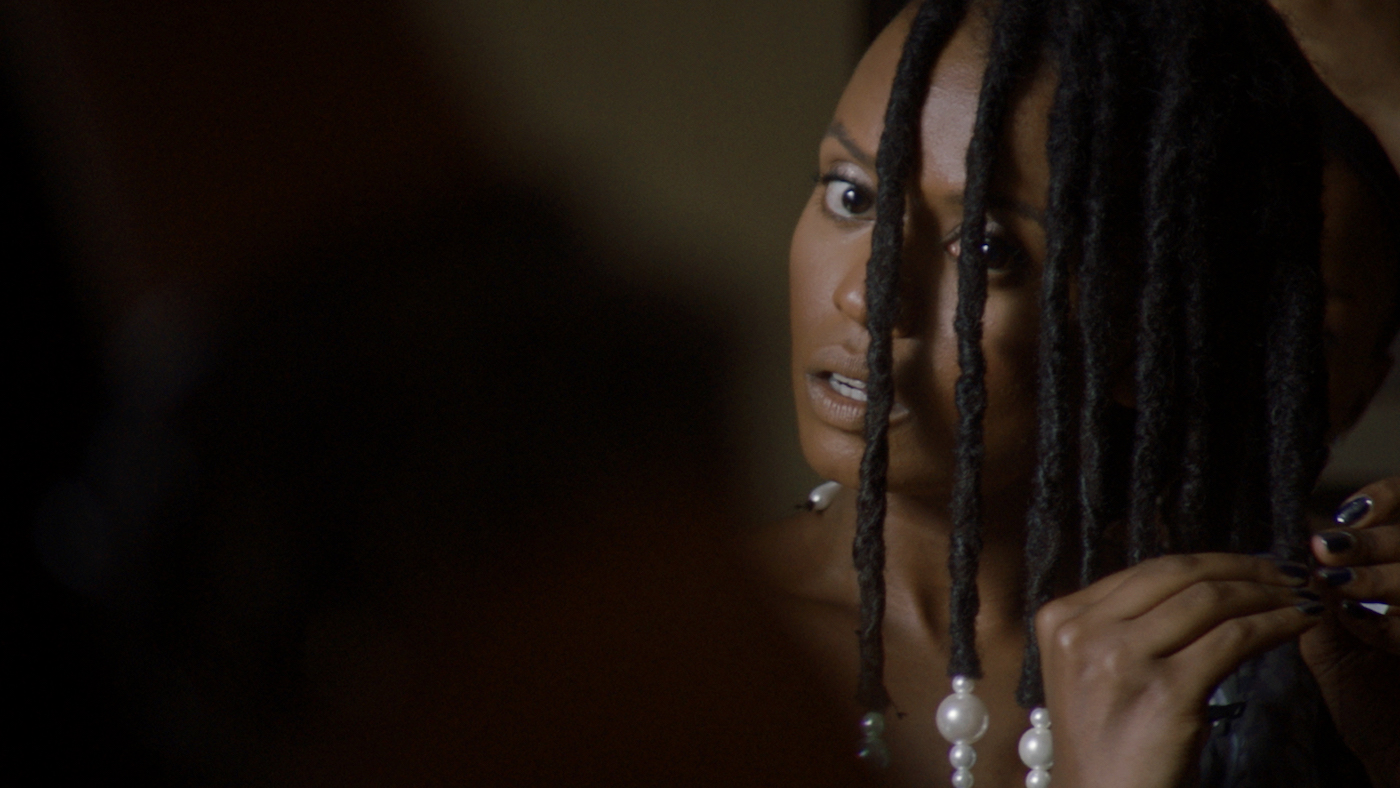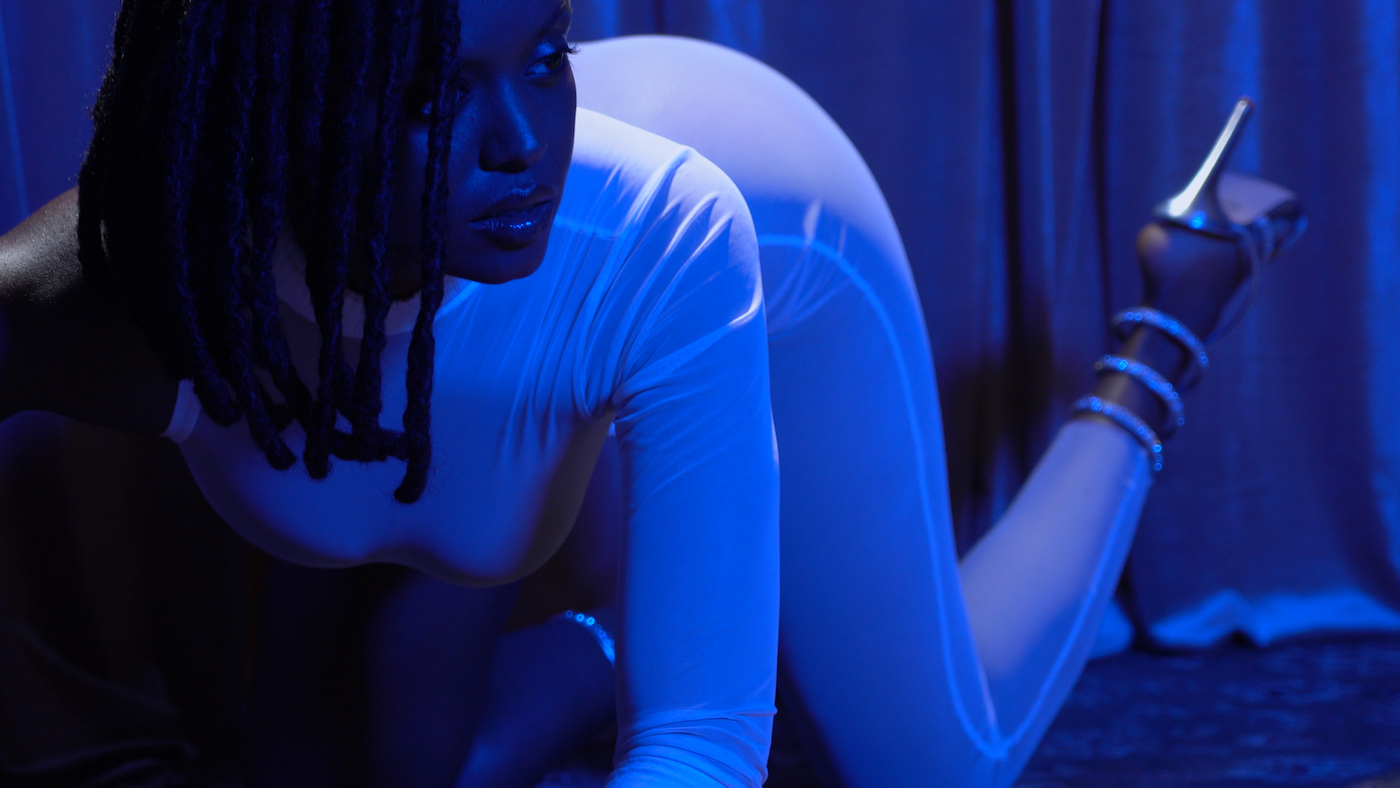
A former storage room underneath a cinema screen might be considered a nightmarish exhibition space for most artists, but for filmmaker Wu Tsang it was a dream come true. “I was so inspired by the fact that this gallery is under a commercial cinema venue, and it has this really strange shape to it; it’s so not a white cube.” The unorthodox space is at Liverpool’s FACT, (Foundation for Art and Creative Technology) and is usually something of an afterthought when it comes to exhibition planning, as the sloping ceiling (to accommodate the rows of seats above) and a series of obtrusive pillars make it a less attractive choice than the more expansive gallery found on the ground floor. For her new show Tsang has taken over both, but it was the awkward irregularity of Gallery 2 that inspired her to create a site-specific work.
Titled Under Cinema, this two-channel installation centres around Kelela, a musician that blends electronic beats with ethereal, soulful vocals as she embarks on the production of her first full-length album.“Kelela’s a friend,” Tsang tells me the day after the install. “I have known her for a while and she approached me about wanting someone to document the process of her making her album. It started as, ‘let’s just shoot in the studio’, but it turned into a two-year process. It’s been very organic and is still unfolding, but this is the iteration that I’ve made for FACT.” While the dominant screen focuses on candid recording sessions and moments of backstage contemplation, a second channel—that requires near perfect positioning if you want to watch both simultaneously— presents a mesmeric portrait of the artist illuminated by a spotlight. At first glance, she seems frozen, but as both films play in unison her alluring gaze travels; she smiles, adjusts her hair and shifts position as if she is watching the documentary with you.

“A lot of my practice is about addressing the relationship between more mainstream cinematic language and multi-channel, art installation film, and how those two forms are very different but are always in dialogue with each other,” Tsang explains. It seems that she has reached the perfect intersection with a space that is part art gallery, part movie theatre.“Whatever gets you through the door,” she adds.“I really don’t like alienating people, so I’m always looking for ways to mix up new audiences, because traditionally art audiences are very narrow. People feel like there’s something you’re supposed to get, and if they don’t ‘get it’ they feel excluded.”
“People feel like there’s something you’re supposed to get, and if they don’t ‘get it’ they feel excluded.”
Issues of exclusion in an even wider sense are central to Tsang’s practice, as her work predominantly centres around communicating voices from marginalised or underrepresented communities. Her film Wildness (2012) celebrated the queer lives of the performers and clientele at a Los Angeles bar called Silver Platter, where she ran a ‘weekly performance party’. Under Cinema shares a likeness not only in its documentary-style format, but also in the fact that it deals directly Kelela’s concerns around the misrepresentation and commodification of the black female experience, as she makes a transition from subculture icon to mainstream star.
Kelela speaks directly about building a persona that is powerful and triumphant in this film, which could serve as inspiration for younger black women “before someone comes along and says ‘you’re great, let me make money off of you’”. For Tsang, this isn’t about constructing an ideal: “To me what the material represents is her just doing her job. She’s like ‘I want to be a disruption and I want to fuck shit up on a bigger and bigger platform, and this is me doing what I have to do to get there.’ ” This powerful motivation is more than evident, and the impact of Kelela’s magnetic personality, coupled with her gorgeous music, is compelling for viewing for die-hard fans and newcomers alike. “For anyone who is interested in underground culture she’s been such a huge presence for all of us for a while,” Tsang adds,“but with this album, she’s potentially crossing over into a wider, mainstream audience.” For Tsang, too, this piece has the potential to introduce her work to a more music-focused group, as well as those who might just be at FACT for the latest blockbuster release.

While making it to Gallery 2 is a bit more of a pilgrimage, Tsang’s other new film, We Hold Where Study (2017) is immediately accessible, with the entrance opposite the box office, something that she welcomes wholeheartedly. The large blacked-out gallery exhibits another two-channel video that employs a pair of overlapping projections. The piece is so large that you need to make use of one of the many giant cushions scattered across the floor, in order to lay back and take in the spectacle.“Seating is everything!” Tsang says wryly, in a nod to the many factors that need to be taken into consideration when showing video, especially when trying to engage new viewers. The film itself is a surreal study of two seemingly disparate scenes. To the right, two dancers (Ligia Lewis and Jonathan Gonalez) move about a studio lit by the glow of various coloured neon lights, interacting in a bizarre medley of sensual gestures and violent bursts of energy; to the left performers Boychild and Jonathan Gonzalez run among a field of tall grass that borders a suburban home, before engaging in their own fractious dance. At various points the projections intersect, and the rhythm of these four bodies gain momentum, dissipate, then build again.
“I’ve always been obsessed with twilight, I don’t know why,”
The film is inspired by the collaborative writings of Fred Moten and Stefano Harney, specifically, the essay Leave Our Mikes Alone, with chapter titles punctuating the film at various points. This builds something of a narrative, but a more overarching sense of time is established by the passing of the day on the left screen, moving from blazing sunshine to encroaching darkness. “I’ve always been obsessed with twilight, I don’t know why,” Tsang admits. “A lot of my films are set in that hour. That moment between day and night, it’s a transitional space where our mood shifts and the visuals around us manipulate our perception of space.” The parallels between these specific junctures in time can easily be drawn back to Under Cinema. While the documentary might span several years, her singular, moving portrait anchors Kelela at a specific transitionary point. The result is a thoughtful account of her friend’s rise to fame, but also a snapshot of a singular, mesmerising moment that might never be captured again.
Under Cinema
26 October to 18 February, 88 Wood Street, Liverpool
fact.co.uk





